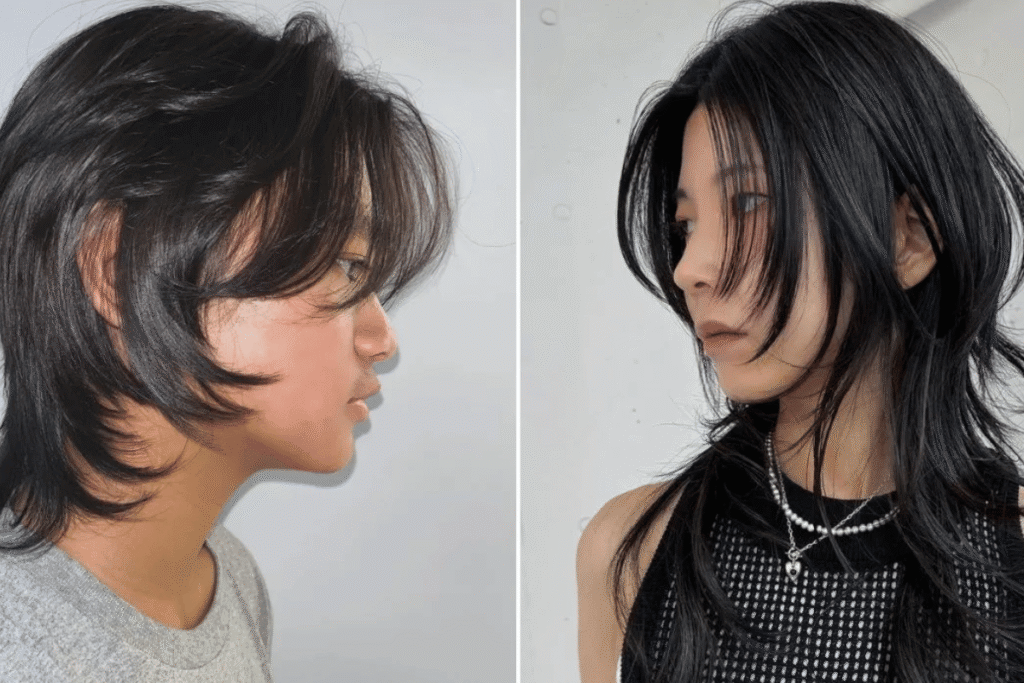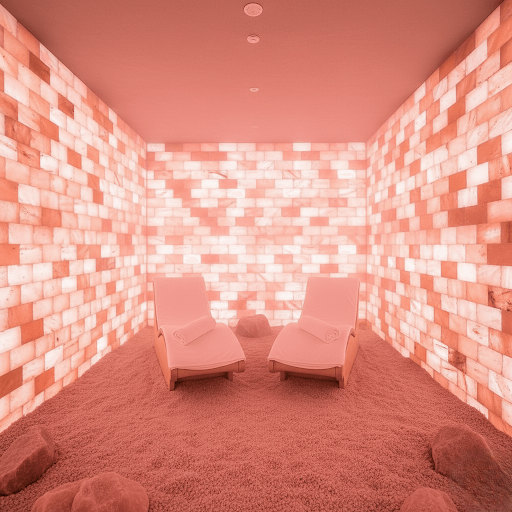Wolf Cut: The Ultimate Guide to This Bold & Edgy Hairstyle
The wolf cut has been one of the most talked-about hairstyles in recent years, blending the effortless messiness of a shag with the face-framing layers of a mullet. It’s a haircut that refuses to be boring—rebellious, stylish, and unapologetically unique. From K-pop stars to TikTok trendsetters, the wolf cut has gone from niche to mainstream, making its way into salons and DIY bathroom transformations around the world.
But what makes the wolf cut so iconic isn’t just the cut itself—it’s the attitude that comes with it. This style is all about embracing natural texture, adding movement to your hair, and channeling a “just rolled out of bed but still fabulous” vibe. Whether your hair is straight, wavy, or curly, the wolf cut can be customized to fit your personality and face shape.
In this ultimate guide, we’ll cover everything: where the wolf cut came from, who it suits best, how to style it, and even tips for maintaining it without losing its signature wild edge. By the end, you’ll know if you’re ready to unleash your inner wolf.
1. What Exactly is a Wolf Cut?
The wolf cut is essentially a hybrid hairstyle, combining the heavily layered, voluminous top of a shag haircut with the longer, choppier back of a mullet. The result? A style that’s equal parts retro and modern, messy and chic. It’s a haircut that plays with contrast—shorter layers around the crown for volume, longer layers towards the bottom for flow, and fringe (bangs) that can be soft and wispy or blunt and bold.
Unlike traditional “polished” hairstyles, the wolf cut thrives on imperfection. The layers are intentionally uneven to create that slightly chaotic, lived-in look. It works incredibly well for those who want a low-maintenance style that doesn’t require constant salon touch-ups to keep its shape.
One of the biggest reasons for its rise in popularity is social media. On TikTok alone, “wolf cut” tutorials and transformations have racked up millions of views. The hashtag #wolfcut is overflowing with before-and-after videos, often featuring dramatic at-home attempts using the infamous “tie your hair in a ponytail and snip” method.
But while the wolf cut can be DIY-friendly, professional stylists can tailor it to your hair type in a way that keeps it flattering rather than frizzy. Done right, it looks like effortless rock-star hair. Done wrong… well, let’s just say hats might become your best friend for a while.
2. The Origins of the Wolf Cut
The wolf cut isn’t a brand-new invention—it’s a modern evolution of styles that have been around for decades. In fact, its DNA comes from two very distinctive hair trends:
- The Shag Haircut (1970s) – Popularized by icons like Jane Fonda and Mick Jagger, the shag was all about layers, movement, and volume. It had a rebellious, carefree vibe that matched the counterculture energy of the era.
- The Mullet (1980s) – Business in the front, party in the back. The mullet was polarizing but undeniably memorable, worn by everyone from David Bowie to Joan Jett. It was edgy, experimental, and unlike anything else.
The wolf cut essentially takes the best of both worlds: the soft, face-framing layers of the shag and the length and drama of the mullet.
The style made a huge comeback thanks to Korean pop culture. Many K-pop idols—such as Choi Beomgyu of TXT and Lisa from BLACKPINK—have sported versions of the wolf cut, inspiring fans to try it themselves. This, combined with the TikTok beauty community’s love for bold transformations, pushed the wolf cut into global trend status by 2020–2021.
It’s also worth noting that the name “wolf cut” isn’t just random—it perfectly matches the hairstyle’s personality. Wolves are wild, untamed, and fierce, just like this haircut’s layered, slightly messy silhouette.
3. Who Does the Wolf Cut Suit Best?
The beauty of the wolf cut is its adaptability. While it’s most striking on certain face shapes and hair textures, there’s a version for almost everyone.
Face Shapes
- Oval Faces: Almost any haircut suits this shape, and the wolf cut is no exception. The layers frame the face without overwhelming it.
- Round Faces: A wolf cut with longer layers and curtain bangs can elongate the face and balance out the softness.
- Square Faces: Wispy layers and textured bangs soften the jawline, making the cut more flattering.
- Heart-Shaped Faces: Longer, face-framing layers help balance a wider forehead and narrower chin.
Hair Types
- Wavy Hair: This is arguably the best texture for a wolf cut—it enhances the natural movement without much styling effort.
- Straight Hair: Works well if you’re willing to add some wave or curl for texture; otherwise, the layers can look flat.
- Curly Hair: A wolf cut can look amazing on curls, but it requires a stylist who understands curl patterns to avoid excessive bulk at the top.
- Thick Hair: Layers help remove weight, giving your hair a lighter, more dynamic look.
- Fine Hair: Shorter layers add volume, but too many layers can make it look thinner, so balance is key.
At the end of the day, the wolf cut is less about strict rules and more about your confidence. If you’re drawn to the edgy, effortless vibe, there’s likely a way to make it work for you.
4. How to Style a Wolf Cut
Styling a wolf cut is where the fun begins—it’s a versatile look that can go from effortlessly tousled to glam and polished depending on your mood.
For Everyday Wear
Most people with a wolf cut simply embrace their natural texture. A bit of sea salt spray, mousse, or texturizing cream can enhance the messy layers. The goal is not to make it perfect, but to give it movement.
Heat Styling
- Curling Wand: Loose, undone waves really bring out the layers.
- Flat Iron: You can create soft bends for a more subtle texture.
- Blow Dryer with Diffuser: Great for wavy or curly hair to keep the volume without frizz.
Accessories
The wolf cut works beautifully with headbands, bandanas, and claw clips. Because the cut already has volume, accessories pop without looking forced.
The “Wet Look”
For a bolder vibe, a bit of gel or styling cream can give a sleek, wet finish. This works especially well for evening events or concerts.
The best part? Because the wolf cut already has a deliberately messy structure, even when it grows out, it still looks intentional—no need for weekly trims.
5. Maintaining and Growing Out a Wolf Cut
One of the biggest advantages of the wolf cut is its low maintenance. Since it’s designed to be slightly wild, you don’t need to rush to the salon the second it starts growing.
Trims
Every 8–12 weeks is ideal to keep the layers fresh. If you want to grow it out, you can extend that to 4–6 months without the style looking unkempt.
Products
- Texturizing Spray: For volume and movement.
- Lightweight Oils: To prevent frizz and dryness, especially in the ends.
- Volumizing Powder: Adds lift to the crown without weighing hair down.
Color
The wolf cut pairs beautifully with bold colors—think platinum blonde, fiery red, or even pastel shades. Balayage or ombre techniques can make the layers pop even more.
Growing It Out
Unlike some trendy cuts, the wolf cut grows out gracefully. The layers will blend into a more classic shag or long-layered style over time.
6. DIY Wolf Cut: Should You Try It?
Ah, the infamous DIY wolf cut trend. It’s tempting—especially after seeing thousands of TikTokers tie their hair into a ponytail, snip away, and end up with surprisingly good results.
But here’s the truth: while the ponytail method can work, it’s a gamble. Without professional sectioning and knowledge of face shapes, you risk uneven layers, choppy bangs, or worse—accidentally giving yourself something that looks more “accidental disaster” than “effortless cool.”
If you do attempt it at home:
- Watch multiple tutorials (not just one).
- Start small—cut less than you think you need.
- Use sharp hair-cutting scissors, not kitchen scissors.
- Be prepared to visit a stylist if it doesn’t turn out as planned.
7. Why the Wolf Cut is Here to Stay
Unlike some viral hairstyles that fade as quickly as they appear, the wolf cut seems to have staying power. Why? Because it’s not tied to just one subculture or generation. It works on short, medium, and long hair, across different textures and styles. It’s both nostalgic (calling back to the ’70s and ’80s) and fresh (thanks to modern styling techniques).
Celebrities keep reviving it, TikTok refuses to let it go, and hair salons are constantly reinventing it with new twists—curtain bangs, micro-bangs, vivid hair colors, and more. It’s adaptable, expressive, and a little rebellious—exactly what people love in a haircut.
Final Thoughts
The wolf cut isn’t just a hairstyle—it’s a mood. It’s for the person who wants to look effortlessly stylish without spending hours in front of the mirror. It’s for the music lovers, the trendsetters, the free spirits, and anyone who loves a good throwback with a modern twist.
If you’re ready to shake up your look, embrace your natural texture, and add some wildness to your style, the wolf cut might just be the perfect match. Just remember: the magic of the wolf cut is in its movement, its messiness, and its confidence. Wear it like you own it—because you do
Keep an eye for more latest news & updates on Gravity Internetnet!






